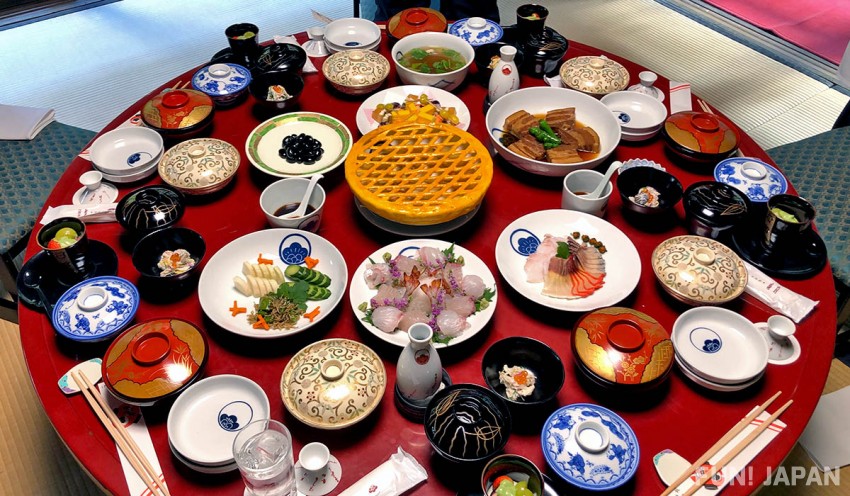
When you think of Nagasaki Prefecture in the Kyushu region, what firsts pops into your mind? Perhaps Castella, Champon noodles, Catholic Churches, etc.? In short, the exotic culture, such as gourmet food and history, is the charm of Nagasaki.
This time, we would like to introduce you to the banquet cuisine "Shippoku Cuisine" (卓袱料理 / Shippoku-ryori), which is a fusion of the cultures of Japan, Greater China, and the Netherlands, along with "Shiseki Ryoutei Kagetsu" which has a long history where you can enjoy Shippoku cuisine!
Nagasaki has prospered as a port city since ancient times
Nagasaki Prefecture is home to various large and small isolated islands and is famous for beautiful sea views. In the olden days, it was the gateway to foreign diplomacy. Even during the more than 200 years of Japan's period of isolation, Nagasaki was the only window for trade, and was a land frequented by the nations of great powers of the time. Nagasaki has been strongly influenced by countries around the world in all aspects of politics, trade, economy, and culture. The fusion of different cultures has created the uniqueness of Nagasaki, which is full of exoticism today.
What is Shippoku Cuisine?
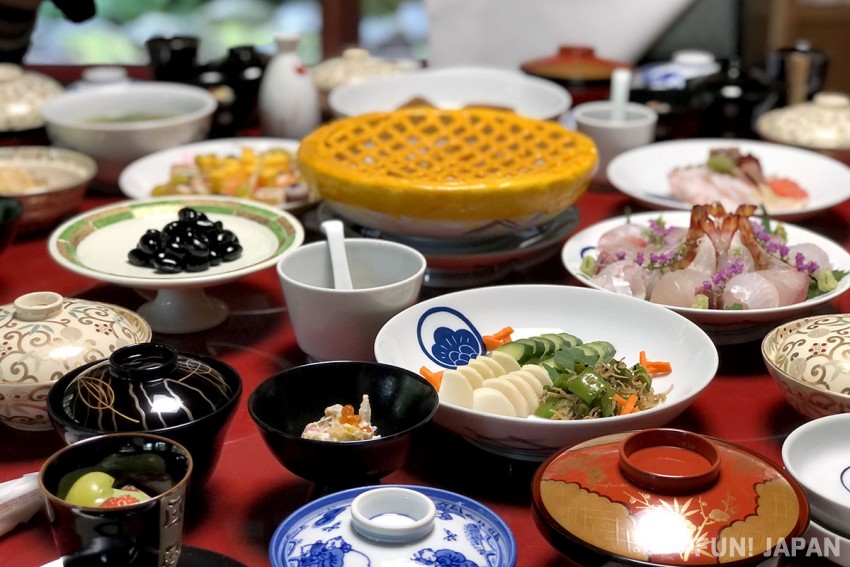
Nagasaki, which was a gateway from overseas, was long greatly influenced by foreign countries in various fields, including religion and food culture, and Shippoku Cuisine is no exception.
Shippoku Cuisineoriginated in Nagasaki was born from the mixture of the cultures of China and the Netherlands, which were the main trading partners at the time. Traditional Japanese banquet cuisine uses a square dining table called "zen (膳)". Course meals are served one by one. Also, the position of the seat is determined by one's status and position. On the contrary, shippoku Cuisine is different from such traditional banquet in that people sit around a large round table and eat together, regardless of social status. Each dish is served on a round platter, and each individual takes their own protion from the platter into their own small plates using their own chopsticks and spoons.

Shippoku Cuisine, which has no formal etiquette and allows guests to enjoy a meal in a friendly atmosphere, was well-received by the people and has become one of Nagasaki's representative local cuisines.
The menu also features unique banquet dishes that combine elements from different cultures, such as Japanese cuisines, dishes using local ingredients, Chinese boiled Dongpo pork (called 東坡煮 'toubani' in Japanese), and Western-style pie dishes. Therefore, it is also called "Wakaran cuisine" (和華蘭料理 / Wakaran Ryori - 和 'Wa' is Japan, 華 'Ka' is China, and 蘭 'Ran' is the Netherlands).
Main menu of Shippoku cuisine
Although there are slight differences in the details and the number of items on the menu depending on the restaurant, the essential main dishes are always toubani which is stewed pork cubes, and pie dishes. This time, the editorial team has visited "Shiseki Ryoutei Kagetsu" and will introduce the best menu for you!
*We had the Shippoku-ryori (Shippoku Cuisine) ¥23,760 (tax included) course per person.

First of all, according to the long-standing tradition, the banquet begins with a word from the proprietress (Okami-san), or in the case of a wedding reception, from the master of ceremonies, saying, "Ohire wo douzo" (お鰭をどうぞ - literally means 'Please enjoy the fins'). The phrase "Ohire wo douzo'' means "We serve one fish for each customer", and it is filled with the feeling of heartfelt hospitality.
【Ohire】Japanese-style soup "fin bowl" (hire-wan)

First item of Shippoku cuisine.
Usually, the soup is served first with ingredients such as sea bream pectoral fins, shiitake mushrooms or bamboo shoots, green vegetables, and red and white rice cakes (mochi).
The proprietress, or in the case of the wedding reception, the master of ceremonies, will say, "Ohire wo douzo" and after everyone has feasted the fin bowls (called 鰭椀 'hire-wan' in Japanese), they will make a toast and the banquet will begin. Remember no to eat any snack before that!
【Tsukuri】plated sashimi

A sashimi platter featuring seasonal fish and shellfish caught in the waters around Nagasaki.
Sea bream and sweet shrimp are often used and have a refreshing sweetness.
【Bara-ni】Torokusun-mame beans, also known as 満女 "Mame" (simmered black soybeans)
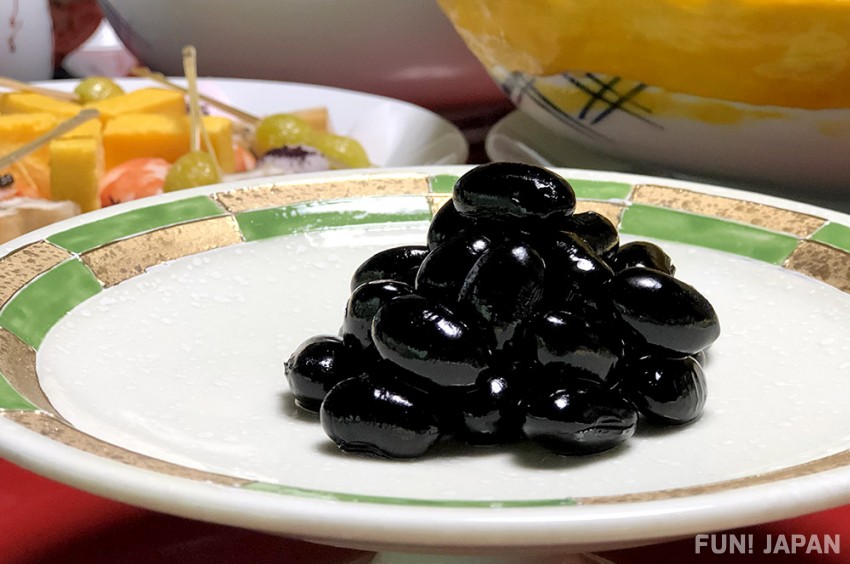
A dish that can be enjoyed even when cold.
Boiled Tanba black soybeans with a refreshing sweetness that tastes like an after-meal dessert. As Shippoku cuisine has inherited the spirit of vegetarian cuisine and medicinal dishes from Chinese temples, eating it is said to increase appetite and is effective for indigestion and fatigue. In the past, when 10 beans were lined up, they were just 6 inches long hence the name Torokusun-mame (十六寸豆 - 十 'to' is 10, 六寸 'roku-sun' is 6 inches, and 豆 'mame' is bean).
【Sanpin-mori】appetizer: assortment of 3 kinds from mountains, sea, and villages

It is made with ingredients such as sweet omelet, boiled seafood, and yam that correspondingly represent the villages, the sea, and the mountains. In the old days, seasonings such as sugar and salt were precious, so it was made with a lot of sugar to express the feeling of hospitality.
【Yubiki】the parboiled
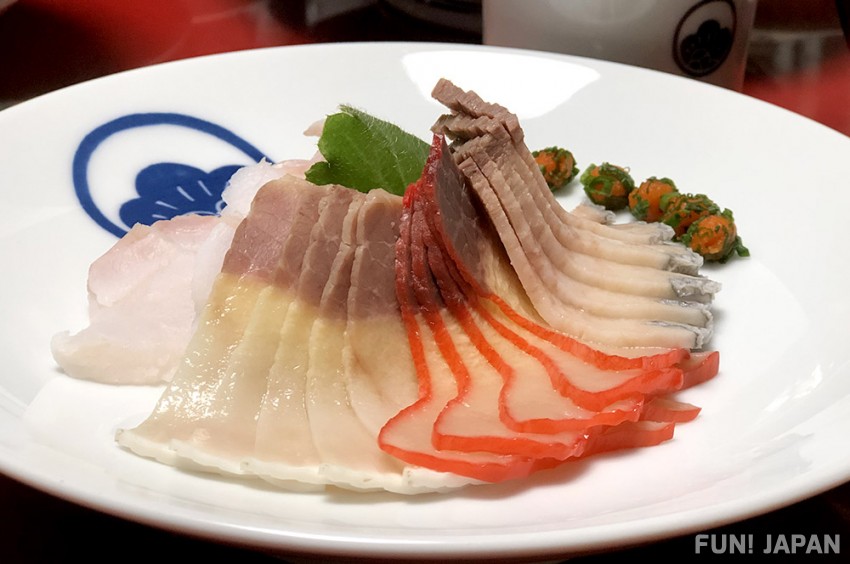
A fish dish made by dipping fresh fish in hot water then soaking it in cold water. It is one of the most popular recipes in Chinese cuisine.
【Chubachi braised pork belly】boiled Dongpo pork 'toubani'
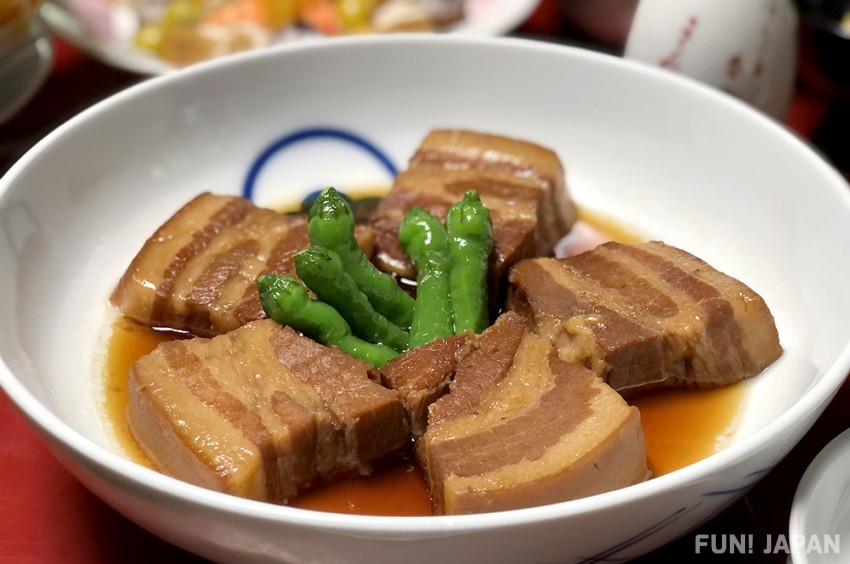
“Chubachi” (中鉢) refers to a plate that is intermediate in size between the large and small bowls.
Hot dishes are served after the appetizers that are delicious even when cold, and "Toubani" is the representative of this. The three-layered pork is simmered with just the right balance of fat and lean meat to acheive a soft, juicy and springy texture. The scent alone will make you drool!
【Pasty】Pie dish
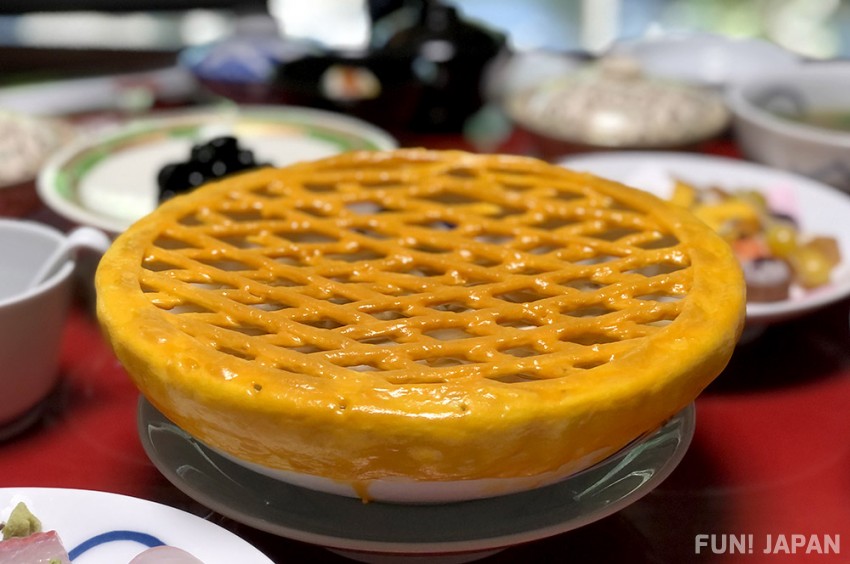
Western-style pie dishes are also on the eat-list. It is done by putting the ingredients in a round bowl and decorating the top with a net-like pie crust. Freshly-baked pie comes in a beautiful amber!
When eating this, first pierce the pie crust on the top to break it up, then put it in the bowl and mix it with the other ingredients inside. In the bowl of this pie dish of "Shiseki Ryoutei Kagetsu", there is often plenty of shark's fin soup.
【Obachi】Seasonal Japanese dishes, boiled dishes, etc.
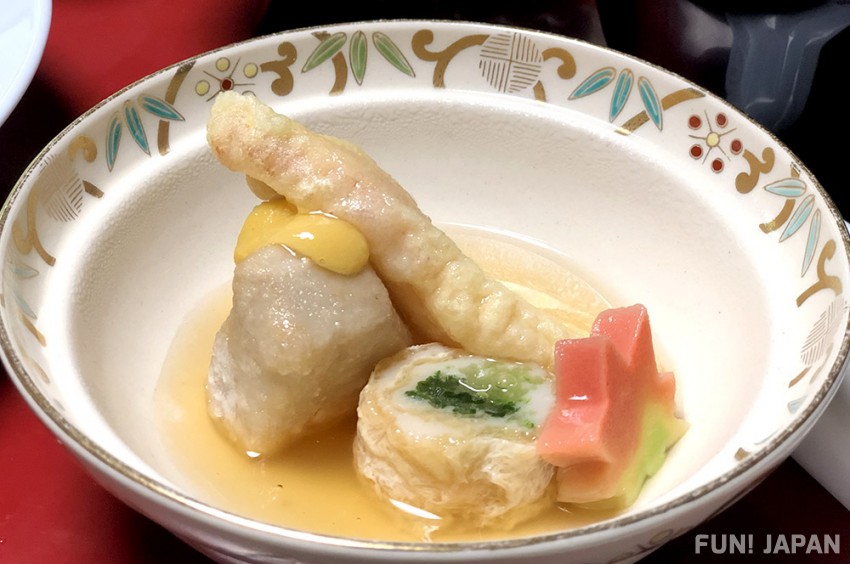
"Obachi" (大鉢) is served on a large round plate while the dish vaires with each restaurant. For example, steamed sea bream, crab, fresh vegetables and seafood. Dishes that use plenty of delicious ingredients from the mountains and seas are served for Obachi.
【Mizugashi】post-meal fruit
A dessert made with seasonal fruits.
【Umewan】post-meal sweetness

It's a oshiruko with red and white round mochi (rice cakes).
In Shippoku Cuisine, the last "Umewan" (梅椀 - plum bowl) and the first "Hirewan" (鰭椀 - fin bowl) form a pair, meaning that it starts and ends with a circle. In other words, they expresse harmony!
【Others】Tempura, pickles, soup, etc.
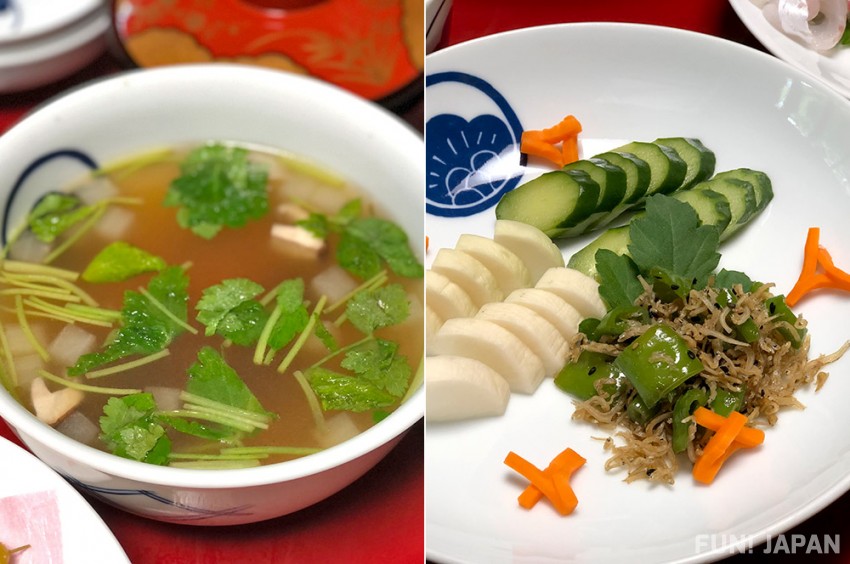
Each 'ryoutei' (restaurant) has different budgets and menu items, but about 15 dishes are served, including rice dishes.
Recommended restaurant to enjoy Shippoku Cuisine - "Shiseki Ryoutei Kagetsu": A restaurant that inherits the architecture and cultural assets of Nagasaki's geisha district
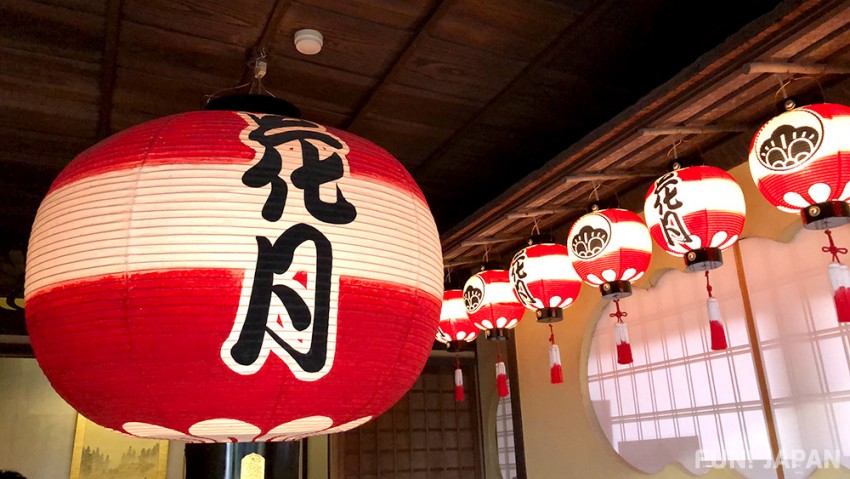
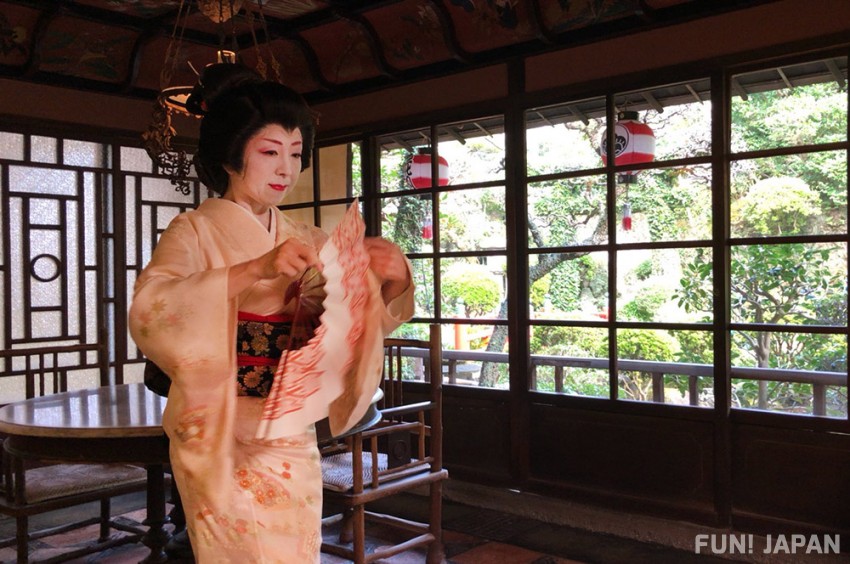
"Maruyama Red-light District" (丸山花街) in Nagasaki is famous as one of Japan's three major geisha districts. During the Edo period, it prospered greatly due to the foreign trade, and was visited not only by celebrities in the domestic political and business world, writers and artists, but also by many influential people from overseas.
At "Shiseki Ryoutei Kagetsu" (史跡料亭 花月), which has been in business for over 380 years in "Maruyama Red-light District", not only can you taste Shippoku cuisine, but also admire the old building of the predecessor "Hiketa-ya Kagetsu-rou" (引田屋花月楼) and an exhibition of valuable historical materials. In the exhibition room of "Shuko-kan" (集古館), paintings, haiku poems, poetry books, and Ryoma Sakamoto's handwritten calligraphy from that time are displayed.
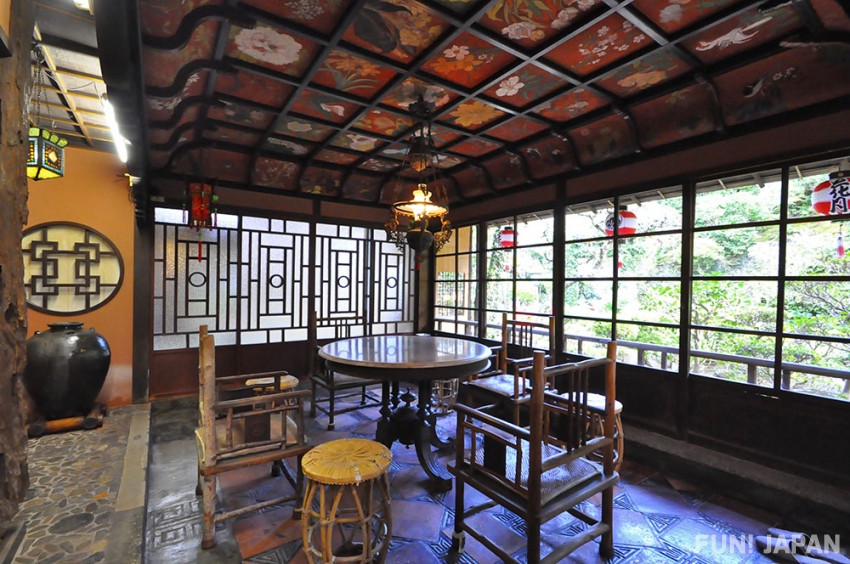
The "Ryu-no-ma" (竜の間) used for banquets is said to be the first banquet hall in Japan to set up tables and chairs. The pillar in the room still bears the marks of Ryoma Sakamoto's sword when he drank alcohol. Also, at the entrance of Kagetsu, there is a picture of Sun Yat-sen, former president of the Republic of China, when he visited too!
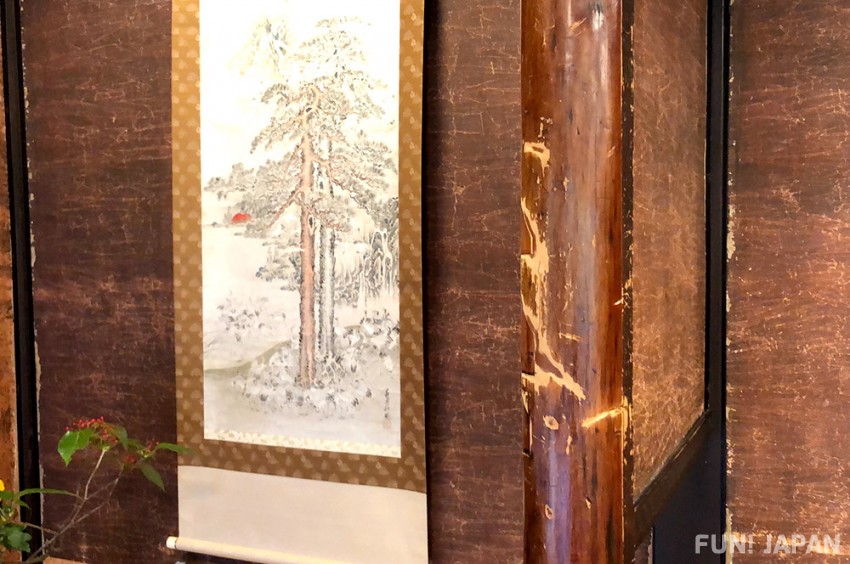

"Ryoutei Kagetsu" has been designated as a Historic Site (史跡 / Shiseki) in Nagasaki Prefecture for having many intact historic sites for nearly 400 years. While enjoying your meal, be sure to immerse in the interesting story that the traces of time still linger about.
Spot Information
- Name: Shiseki Ryoutei Kagetsu
- Address: 2-1 Maruyamamachi, Nagasaki City, Nagasaki Prefecture
- Access: About 11 minutes from Nagasaki Electric Tramway's "Nagasaki Ekimae" Tram Stop to "Shianbashi" Tram Stop, about 4 minutes on foot after getting off
- Business hours: 12:00-15:00 (L.O.13:00), 18:00-22:00 (L.O.19:00) Reservation required (minimum of 2 adults)
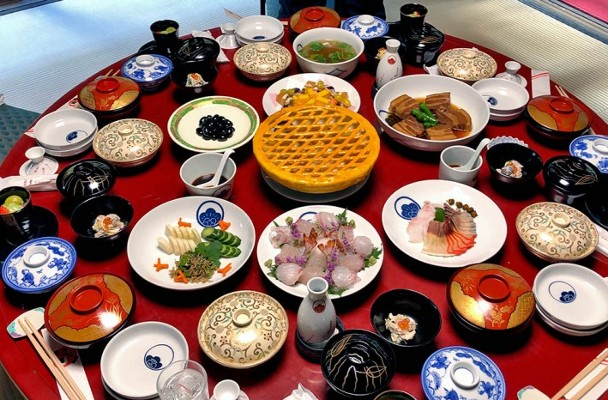
Comments